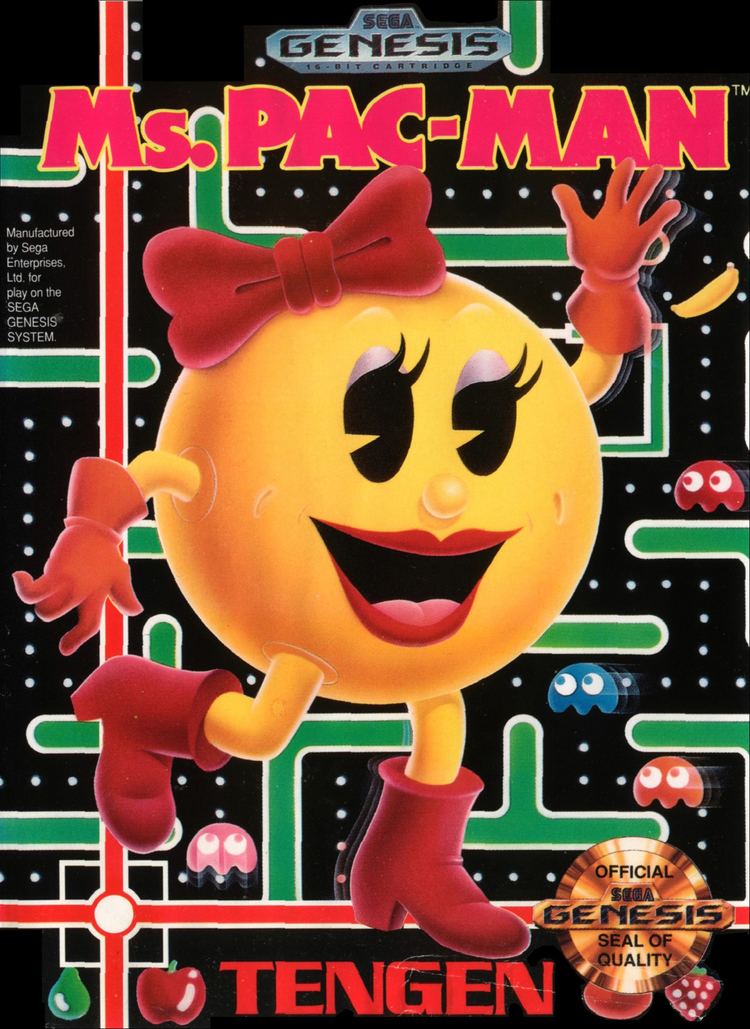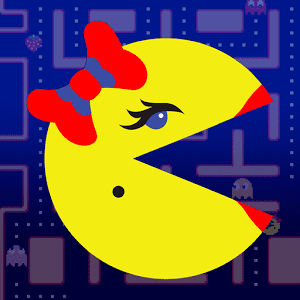8 /10 1 Votes8
| 4/5 Google Play Genre(s) Maze Initial release date 1981 | |||||||||||||||||||||||||||||||||
 | ||||||||||||||||||||||||||||||||||
Mode(s) Up to 2 players, alternating turns Cabinet Standard upright, mini-upright and cocktail CPU 1x ZiLOG Z80 @ 3.072 MHz Platforms Arcade game, Xbox, Nintendo Entertainment System Nominations Kids’ Choice Award for Favorite Videogame Similar Pac-Man games, Atari games, Maze games | ||||||||||||||||||||||||||||||||||
Arcade game ms pac man 1981 midway
Ms. Pac-Man is an arcade video game from the Golden Age. It was produced by Illinois-based Midway Manufacturing corporation, the North American publisher of Pac-Man. Ms. Pac-Man was released in North America in July 1981, and is one of the most popular arcade video games of all time. This popularity led to its adoption as an official title by Namco, the creator of Pac-Man, which was released in the United States in late 1980. Ms Pac-Man introduced a female protagonist, new maze designs, and several other improved gameplay changes over the original Pac-Man. Ms. Pac-Man became the most successful American-produced arcade game, selling 115,000 arcade cabinets.
Contents
- Arcade game ms pac man 1981 midway
- Classic game room ms pac man arcade game review
- Gameplay
- Scoring
- History
- Ports
- Reception and legacy
- In fiction
- Japanese release
- References

Classic game room ms pac man arcade game review
Gameplay

The gameplay of Ms. Pac-Man is very similar to that of the original Pac-Man. The player earns points by eating pellets and avoiding ghosts (contact with one causes Ms. Pac-Man to lose a life). Eating an energizer (or "power pellet") causes the ghosts to turn blue, allowing them to be eaten for extra points. Bonus fruits can be eaten for increasing point values, twice per round. As the rounds increase, the speed increases, and energizers generally lessen the duration of the ghosts' vulnerability, eventually stopping altogether.
There are also some differences from the original Pac-Man:
Scoring
After level 7, any fruit will appear, although its point value will be the same (unlike in Pac-Man, in which the Key will always be the fruit after level 13).
History
Ms. Pac-Man was originally conceived as an enhancement kit for Pac-Man called Crazy Otto, created by programmers employed at the General Computer Corporation (GCC). While Crazy Otto was under development, GCC settled a lawsuit with Atari over their Missile Command conversion kit Super Missile Attack. Part of the settlement terms barred GCC from selling future conversion kits without consent from the original game manufacturer.
Rather than scrapping Crazy Otto entirely, the programmers decided to present the completed game to Midway, Namco's American distributor of Pac-Man. Midway had become impatient in waiting for Namco to release its next Pac-Man game (which would be Super Pac-Man), and were enthusiastic that such a game had come to their attention. They bought the rights to Crazy Otto and changed the sprites to reflect the Pac-Man series. Midway renamed the game multiple times in development, to Super Pac-Man, "Pac-Woman," "Miss Pac-Man," "Mrs. Pac-Man," before finally settling on the name "Ms. Pac-Man" before releasing it into arcades.
Shortly before release, Stan Jarocki of Midway stated that Ms. Pac-Man was conceived in response to the original Pac-Man being "the first commercial videogame to involve large numbers of women as players" and that it is "our way of thanking all those lady arcaders who have played and enjoyed Pac-Man." The game was later awarded the Certificate of Merit as runner-up for Coin-Op Game of the Year at the 1982 Arcade Awards held in January 1983.
The game went through several name changes. The original name was going to be Pac-Woman. That name was eventually dropped and then Miss Pac-Man was chosen, but because of the family imagery in the third intermission, protests were feared about the Pac-couple having a Pac-baby out of wedlock. The name was changed to Mrs. Pac-Man, and then finally to Ms. Pac-Man, which rolled off the tongue easier. These later changes (Miss, Mrs., and Ms.) all occurred within 72 hours of actual production.
After the game became wildly popular, Midway and GCC undertook a brief legal battle concerning royalties. The Killer List of Videogames notes that the game was accomplished without Namco's consent, causing both companies to eventually turn over the rights to Namco. Ms. Pac-Man was reportedly the first in a series of unauthorized sequels that eventually led to the termination of the licensing agreement between Namco and Midway. GCC co-founder Doug Macrae has disputed stories that the game was manufactured without Namco's blessing, claiming that then-Namco president Masaya Nakamura had even provided feedback over character artwork during the game's development.
Ms. Pac-Man was later released on the third Namco Museum game; however, there is no mention of it in Namco's official archives (including the archives on all of the Namco Museum releases).
In 2001, Namco released an arcade board featuring both Ms. Pac-Man and Galaga in honor of the 20th anniversary of both games with the subtitle "20 Year Reunion / Class of 1981". It also features Pac-Man as a hidden bonus game. The later 25th Anniversary Edition allows all three games to be selected at the main menu.
Ports
Like many other games of its era, Ms. Pac-Man has been ported to many platforms.
Reception and legacy
InfoWorld stated that Atarisoft's Ms. Pac-Man for the Commodore 64 was as good as the best-selling Atari 8-bit version. Reviewing the Game Gear version, GamePro commented "If you loved the Pac-Man games, then you loved Ms. Pac-Man, and if you loved Ms. Pac-Man at the arcades, you'll love her here, too."
In 2009, Game Informer put Ms. Pac-Man 10th on their list of "The Top 200 Games of All Time", saying that it "trumped [the original Pac-Man] in nearly every way". This is down one rank from Game Informer's previous best games of all-time list. Entertainment Weekly called Ms. Pac-Man one of the top ten games for the Atari 2600 in 2013. In 2016, Ms. Pac-Man placed 5th on Time's The 50 Best Video Games of All Time list.
In fiction
During Season 5, Episode 6 (“A Modest Proposal”) of the television show Weeds, live action gameplay captured from a Ms. Pac-Man screen forms a segue between scenes. It establishes the depressive state of main character Andy after lead character Nancy leaves him a ”Dear John” letter. He uses most of a cash windfall to purchase extravagances such as an arcade machine for his living room. Game sounds punctuate the episode’s plot, especially a later scene where Nancy leaves Andy’s house. Just after her departure, the game over sound plays, highlighting a turning point in the two characters’ relationship.
In Season 8, Episode 12 ("The One Where Joey Dates Rachel"), of Friends, Phoebe gives Monica and Chandler a Ms. Pac-Man arcade game as a wedding present.
Japanese release
Due to Midway Manufacturing buying Ms. Pac-Man from General Computer Corporation without Namco's involvement, Ms. Pac-Man never saw a Japanese arcade release, but was ported to popular Japanese consoles such as the Famicom, Super Famicom and the Sega Mega Drive and later sold digitally on Xbox Live Arcade, These ports were later localised for the US and European Markets,
